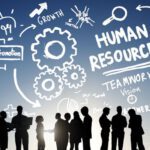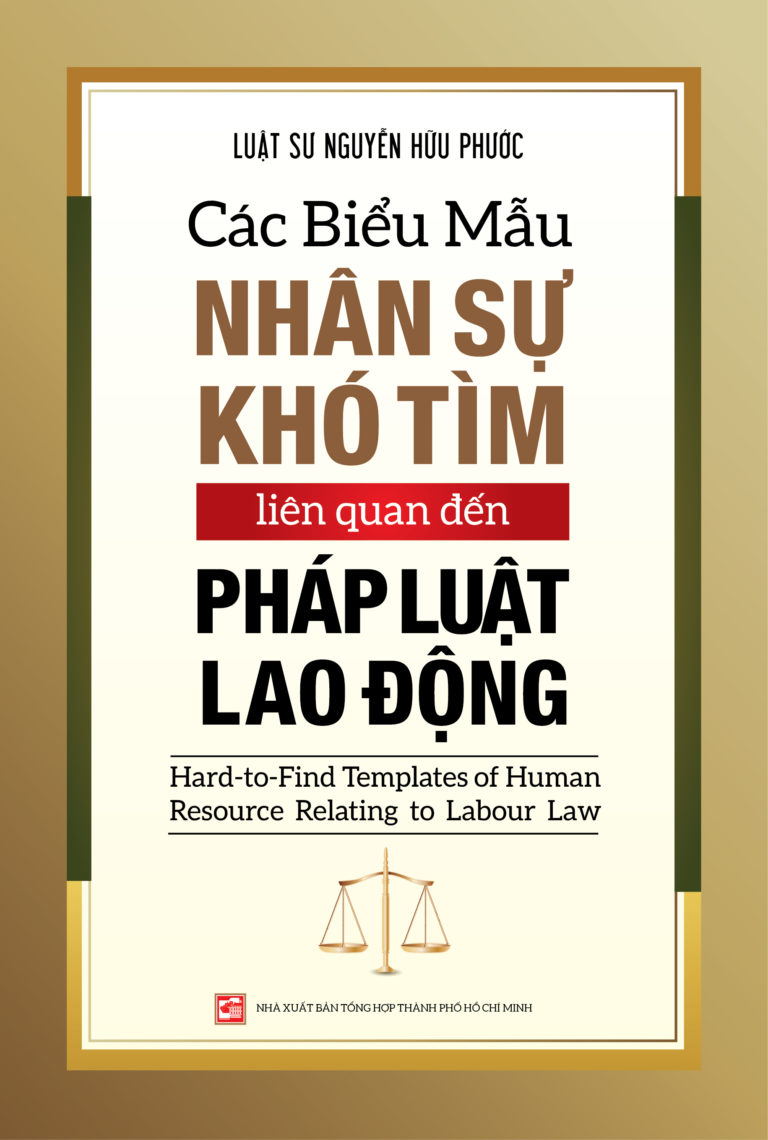Sharing Experiences In Effective Human Resource Management
According to IBM Corporation – a giant in the multinational computer technology manufacturing industry: “A people-centric organisation means that they invest everything in the experience of their workforce, shareholders, partners, equivalent to how they care about their customers, users and communities” and this is exactly the philosophy that IBM Corporation has followed for decades of operating and developing its business to adapt to major economic and technological changes of each different period. Viewed from this perspective, focusing on people and corporate culture not only helps businesses grow strongly but also creates sustainable value for society. This philosophy was widely shared by IBM Corporation with the media and the public and quickly became a new trend in corporate governance, emphasising the important role of people in the comprehensive development of an organisation. The article Sharing Experiences In Effective Human Resource Management below will help readers better understand ways to help businesses manage human resources effectively and achieve sustainable development.
-
Defining human resource management goals and strategies
To build an effective personnel management strategy, defining clear goals is extremely important. The goal of human resource management is not simply to focus on recruiting and maintaining the commitment of employees to the business, but also to promote the development and performance of employees. One of the important goals of human resource management is to create a positive and creative working environment. This requires managers to create conditions for employees to maximise their capacity and creative ideas. At the same time, this goal also requires an emphasis on building good relationships between employees and managers, between employees.
In addition, another important goal of personnel management is to build and maintain a team of high-quality personnel. This requires an emphasis on recruitment, training and development of employees. Managers need to clearly identify the needs of human resources, thereby developing appropriate recruitment and training plans. At the same time, vocational training and performance evaluation programs should be established to monitor and evaluate employee development.
To achieve the above-mentioned HR management goals, defining a human resource management strategy is extremely important. This strategy needs to be built on a clear understanding of the needs and aspirations of employees, as well as the organisation’s development goals. Human resource management strategies need to be flexible and adaptable to changes in the business environment and labour market, thereby promoting sustainable development for both employees and enterprises.
-
Recruitment experience
Recruitment and development of personnel is one of the important factors determining the success of an organisation. Recruiting the right personnel and developing them to reach their maximum potential is not an easy process. However, if done effectively, it will make a big difference in the growth of the business.
First of all, the personnel recruitment process is one of the most important jobs for any organisation. To ensure hiring success, due diligence and attention to detail are indispensable. Properly identifying staffing needs and a clear job description will help attract the candidates who are best suited to the position.
One of the most important steps in the hiring process is the interview process. This is an opportunity for employers to assess candidates’ skills and competencies, as well as better understand their personality and working style. To conduct the interview process professionally, recruiters need to have appreciative skills and acumen in asking the right questions to be able to better understand the candidate. In addition, the selection of candidates also requires careful consideration. The selection of candidates is not only based on professional capacity but also must consider the personality, values, working style and career goals of the candidate in accordance with the job position and corporate culture. Only when employers evaluate all of these factors comprehensively can they select candidates who best reflect their abilities and personalities.
In the context of an increasingly competitive recruitment market leading to quality resources becoming increasingly scarce, recruiting and retaining talented personnel is a major challenge for organisations. However, through the application of effective and professional recruitment methods, the organisation can attract and retain the best candidates, thereby improving the performance and competitiveness of the business in the business market.
-
Experience in human resource management and development
- Training and career development for personnel
After recruiting the right personnel, their development becomes a top priority. Training and skill development for employees not only helps them improve their current jobs but also prepares them for future promotion opportunities. Therefore, identifying the need for training and developing personnel is an important step that cannot be ignored.
First of all, the analysis of personnel training and development needs needs to be carried out carefully. This may include assessing an employee’s current skills, identifying new skills needed for the job, and defining development goals for each employee. A comprehensive and detailed approach will help enterprises better understand the factors and conditions needed to develop their human resources. Once the needs have been identified, training and development planning is an important next step. This plan needs to be flexible and reflect the specific needs of each employee. The arrangement of courses, study sessions, or other skill development activities needs to be tailored to the employee’s work schedule, while ensuring that they have enough time and resources to participate.
In addition, the use of modern training facilities is also an important factor in the personnel development process. Today’s technology provides many advanced learning tools, from online courses to software and mobile applications that support flexible learning of employees. The integration of technology into the training process helps to optimise efficiency and save time for both learners and teachers, suitable for the majority of employees, especially those with busy or unfixed work schedules.
Finally, evaluating the effectiveness of the training and development process is an indispensable step. By monitoring and evaluating the progress of employees after the training process, businesses can better understand the strengths and weaknesses of the training program, thereby adjusting and improving to deliver the best results.
- Working environment
Building a positive and encouraging work environment not only benefits individuals but also plays an important role in the HR development process of an organisation. A positive work environment not only facilitates personal growth but also helps create employee satisfaction and commitment.
Support and encouragement from leaders and colleagues will help employees feel valued and appreciated. This not only helps create a positive work environment but also promotes their personal and professional growth. When receiving support and encouragement from people around them, employees will have a strong motivation to overcome difficulties and develop themselves.
Fairness in problem handling is also an important factor in building a positive work environment. When employees feel they are being treated fairly, they are more motivated and committed to their work. This not only creates stability in the organisation but also helps create a dynamic and creative working environment.
In addition, creating development and promotion opportunities for employees also plays an important role in encouraging them to develop themselves. When employees receive opportunities to develop their skills and personal potential, they feel valued and motivated to work harder. Overall, building a positive and encouraging work environment not only helps create employee satisfaction and commitment but also plays an important role in the organisation’s HR development process. Support, encouragement and fairness in problem solving will help employees feel valued and motivated to develop themselves.
- Salaries and benefits
The payment of salaries is not only a legal obligation but also an important part of maintaining a fair and positive working environment. According to current labour laws, enterprises must pay salaries to employees not lower than the regional minimum salary set by the Government from time to time and shall ensure full participation in benefits of social insurance, unemployment insurance and compulsory health insurance for employees if the employees meet the conditions participate. According to the provisions of Article 90 of the Labour Code 2019, the promulgation and application of the minimum salary and policies on social insurance, unemployment insurance and compulsory health insurance for employees are aimed at ensuring that the salaries received by employees meet the minimum living standards of employees and their families as well as protection of public interests, environment and social safety.
In the context that the labour market has fierce competition today, enterprises shall not only comply with the regulations on the regional minimum salary but also consider proposing the salary to pay employees according to the average salary in the labour market for the industry, the job that enterprises are hiring to attract and retain talent. In addition to the base salary, businesses should also consider paying bonuses based on the individual performance of employees and the role of the collective to create a fair and healthy work environment. Rewarding employees is also a form of recognising their dedication to the development of the business, thereby motivating employees to continue to contribute and stick with the business.
Besides salaries, a crucial factor in attracting and keeping employees to work is the working environment and welfare regime that businesses give to their employees. Accordingly, a healthy working environment, ensuring occupational safety and hygiene and benefits higher than prescribed by law such as providing snacks during the day working time, participating in health insurance for themselves and their families in addition to compulsory insurance regimes prescribed by law and being provided with more annual vacation days, sick leave than prescribed by law are also ways for businesses to show their concern and care for the health of employees as well as create conditions for them to be more assured of dedication at work.
Above is the general content related to the Sharing experiences in effective human resource management that Phuoc and Partners share with readers. If you have any difficulties related to the legal field, please contact us. Phuoc & Partners is a law professional consulting firm established in Vietnam and which currently has nearly 100 members working in offices in Ho Chi Minh City, Hanoi and Danang. Phuoc & Partners is also considered one of the leading law firms with specialised staff in the legal field in Vietnam, whose practice areas are ranked first in the legal market such as Labour and Employment, Taxes, Mergers and Acquisitions as well as Litigation. We are confident to be one of the Law Firms providing the best legal services to clients.










